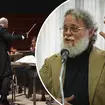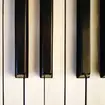Beethoven - Piano Concerto No.3 in C minor: Full Works Concert Highlight of the Week
Jane Jones explores the drama that reveals the piano as the poet.
If your picture of Beethoven is, like mine, of a dramatic, dark personality whose tragic life events shaped him and his music, then the Piano Concerto No.3 is the man personified!
The concerto was begun in 1800, but not premiered until 1803; these were critical years for Beethoven who was struggling to come to terms with poor health and an increasing awareness that his hearing may be irretrievably damaged. When the rest cure at Heiligenstadt didn’t work, the composer appeared almost suicidal but - in a famous letter to his brothers - he revealed that it was only music that prevented him from killing himself. Knowing how the composer was suffering seems to put all the dark drama of the C minor Piano Concerto into context.
There are all sorts of characteristics which go with this particular key – and its potency is not lost on Beethoven who uses the same key of C minor for his Pathetique Piano Sonata and the Fifth Symphony. I’m sometimes surprised when this concerto is referred to as ‘Mozartian’ in style, rather than a work more typical of the radical romantic. The first movement is full of stormy, turbulent passages – and it breaks all the past Mozartian conventions by placing the piano at the heart of the action. All that angry brute forcefulness gives way in the second movement to one of the composer’s most tender, lyrical passages. The contrast is marked - it’s as though Beethoven is using these singing, poetic phrases to console us after the clashes of the opening. By the time we get to the finale, we’re completely disarmed, and Beethoven seems to be almost playing with our emotions with a skipping rondo. It’s a delight! However, whilst Beethoven seems to be travelling the gamut of emotion from tragedy to comedy, underlying the entire work is a determination by the composer as pianist to show off his instrument as every bit as good, as powerful and as expressive as the entire orchestra around it.
When it was premiered, with Beethoven himself as the soloist, much had changed for the composer in the years since he’d begun his third piano concerto, and maybe that’s why the score that night was blank! Beethoven’s page turner on the concert platform was his friend Ignaz von Seyfried, who wrote: ‘I saw almost nothing but empty pages; at the most, on one page or another, a few Egyptian hieroglyphs wholly unintelligible to me were scribbled down to serve as clues for him; for he played nearly all the solo part from memory since, as was so often the case, he had not had time to set it all down on paper’.
If the contrast of power and poetry in the music isn’t enough to tempt you, then this concerto is also the first to exploit the latest in piano technology, so it has a special place in the heart of piano geeks! At the end of the 18th century, piano manufacturers were experimenting with the piano’s range, extending it beyond the then standard five-octave span. Beethoven was at first reluctant to use the extra notes available on the new piano, since it would limit possible performances of his music to only the latest instruments. But, as a pianist, Beethoven couldn’t resist the possibilities these advances offered him, and the Piano Concerto in C minor is the first to demand a high G from the soloist. By the time he came to copy out his concerto for a friend in 1804, the instrument’s development had continued apace, and Beethoven couldn’t resist pushing the boundaries further by adding a top C – outrageous at the time! But exactly what you’d expect from music’s famous radical!


























